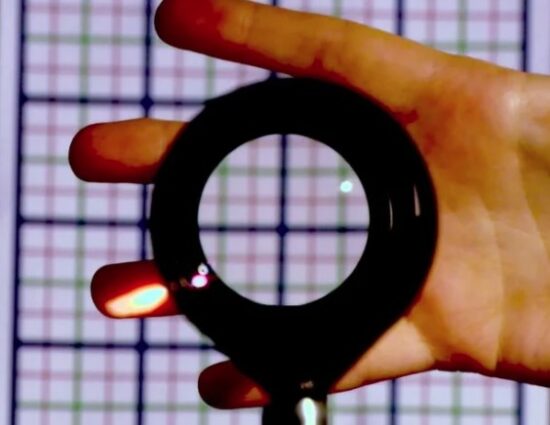The invisibility cloak that Harry Potter wears in J. K. Rowling’s books is woven from the hair of a magical creature. But in the real world, the magic of invisibility is not dependent on fantasy, but rather on science and engineering. Whether the technology employs mirage effects, metalenses, metamaterials, stealth technology or advanced camouflage, the pursuit of invisibility is real and progress being made over the last few decades is more than just quirky engineering and science. Why pursue invisibility? For the military, it can make a difference in how the wars of today and the future are fought.
Experiments on invisibility have been on the go since the 1960s. Back then, Harvard and the University of Utah experimented with using augmented reality to produce optical camouflage that combined highly reflective material, computers, video cameras, projectors, and specially-designed mirrors. The effect worked but as an invisibility solution, it was far from compact.
Mirage Invisibility
In 2011, a University of Texas experiment used the mirage effect to achieve invisibility. Mirages are what drivers see on hot stretches of a highway when photothermal deflection occurs because of differences in the temperature between the pavement and the air above it. This creates false images which appear as watery surfaces in the distance. In deserts, that same phenomenon happens when hot sand is in contact with the air above it which causes lightwaves to bend making a phantom oasis appear in the distance. The Texas experiment achieved a mirage effect by heating sheets of carbon nanotubes that interacted with the surrounding air to make anything behind the material invisible.
Meta Invisibility
At Duke University in 2006, metamaterials were first used to distort the flow of microwaves. Although humans cannot see microwaves, this work showed the promise of metamaterials for use in deflecting visible light. A team at the University of Maryland the next year used metamaterial to bend visible light proving it was possible.
Back in 2012, I posted an article describing the creation of a thermal invisibility cloak designed to hide electronic heat signatures. I didn’t call the material used meta. It was made from thin PVC-type polymers, silver and gold and certainly sounds like it fit the category.
Then there is an engineering experiment at Harvard University done in 2018 that employed broadband achromatic metalenses and metamaterials to make objects undetectable across the entire visible light spectrum. The results can be seen in the image below. Pretty spooky!

Behind meta invisibility, you find two commonly used terms: metalenses and metamaterials. What are they?
A metalens is a flat very thin lens made of metamaterials. Harvard used titanium dioxide for its metalens. The lenses are thinner than a human hair. Today you find them in digital cameras, microscopes, and mobile phones where space is at a premium.
Metamaterials are synthetic composites that are nanoscale in thickness and smaller than the wavelength of light. They exhibit negative electromagnetic properties which means unlike natural material which is positive and visible in light, metamaterial causes lightwaves to pass around any object covered by it.
A large enough piece of metamaterial could hide a tank on a battlefield making it invisible to an enemy.
Stealth Invisibility
Another way to create invisibility is to use stealth technology. This is technology currently deployed on aircraft like the United States Air Force F-35. Stealth doesn’t deflect light waves. But it does deflect radar. Radar transmitters send electromagnetic waves from a transmitting source which then get reflected when an object is encountered.
So what a stealth aircraft has is electromagnetic wave-absorbing composite materials applied to its surfaces. Thus the aircraft is undetectable by radio waves although it can be seen visually if a spotter is looking up. But radar operators seldom look up and watch the world through their receivers. Hence a stealth aircraft can remain invisible to them until the sound of the jet engines can be heard approaching.
Camouflage Invisibility
The military began adopting camouflage in World War One ending a tradition of uniforms with bright colours that made a soldier highly visible to an opponent holding a rifle. Naval vessels before World War One were painted white. Camouflage soon altered their look as well as that of the armies and aircraft being deployed. Today, the art of war is all about camouflage and deception.
Fractal colouration that mimics nature can be found on today’s battlefields (see the tank in the image below).

Beyond fractal colouration, today’s field camouflage uses materials made from semiconducting polymers that absorb a portion of incoming light and radio waves to make them almost invisible. Even a vehicle as large as a tank becomes almost undetectable, cutting in half the observable range of spotters looking for the enemy on a battlefield. As forces move forward they can be walking or driving right into the field of fire of nearly invisible tanks, like the one above, having never seen it.
Camouflage on today’s battlefields goes beyond deflecting visible, radar and infrared spectrums. Special materials hide the heat signatures of soldiers making thermal imagers and night vision goggles ineffective.
At the University of California-Irvine, battlefield wear is being developed to make infrared imagers inoperative using materials embedded with tiny metal flakes in thin rubber sheets. The material is almost as light as today’s uniforms.
A British military contractor, BAE, is developing appearance modulation to alter the look of a military vehicle like a tank when seen through a thermal imager. What the viewer sees is a car.
Then there is quantum stealth technology that uses colouration patterns to hide objects in plain sight.
There are even camouflage technologies that make something as large as a tank appear to be local foliage, absorbing the characteristics of the organic and inorganic materials found on a battlefield.
As cool as Harry Potter’s cloak of invisibility appears to be, current and future materials science discoveries and technological advancements may have it beat.









